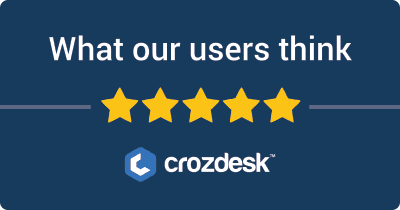Competitive Benchmarking: What Is It and How To Do It Right

(AKA: How to Spy on Competitors Without Getting Caught—Ethically, Of Course)
Competitive benchmarking isn’t about dusty reports or MBA buzzwords. It’s like your business putting on night-vision goggles and seeing exactly where you stand in the jungle of your industry. Think of it as “Why does Karen’s Café get all the TikTok hype for burnt lattes?” meets “How do we steal their thunder (but legally)?”
What is really Competitive Benchmarking?
It’s the art of peeking over your competitor’s fence to see why their grass is greener—or why yours is secretly AstroTurf. For example:
A food truck owner times how fast the rival taco stand serves customers (and copies their “2-for-1 margarita” panic move during lunch rushes).
A Shopify store reverse-engineers a competitor’s product page to discover they’re using “limited stock” warnings that boost conversions by 200%.
A plumber discovers their rival ranks #1 for “toilet emergencies after midnight” by offering free Disney+ subscriptions during service calls.
Translation: It’s strategic mimicry with a side of spite.
Difference between Competitive Benchmarking and Competitive Analysis
These two terms sound like corporate twins, but they’re more like cousins who fight at Thanksgiving. Here’s the cheat sheet:
Competitive Benchmarking: The Copycat’s Playbook
Imagine you’re a pizza shop owner. Benchmarking is when you:
Steal your rival’s “free garlic knots” promotion → but add truffle oil to out-fancy them
Time how fast they deliver → then beat them by 5 minutes
Count their 5-star reviews → then bribe customers with “free tiramisu for Google love”
Translation: It’s measuring your flaws against their wins using specific KPIs (like delivery speed, pricing, or Instagram hashtag clout). Goal? Steal their homework, then rewrite it in glitter pen.
Competitive Analysis: The Big Picture Stalker Move
Now imagine zooming out. Competitive analysis is when you:
Discover your taco truck rival’s secret: They’re using ChatGPT to write salsa-themed love poems for Yelp reviews
Map their marketing: They’re dominating TikTok with “guac unboxing” videos (yes, that’s a thing)
Uncover their weak spot: Their “24-hour service” tanks after midnight because their staff rage-quits
Translation: It’s spying on their entire playbook—products, pricing, promo tactics—to see where you fit in the Hunger Games of your industry.
The “Don’t Mix These Up” Cheat Sheet
| Benchmarking | Analysis | |
|---|---|---|
| Focus | Specific metrics (speed, price) | Holistic strategy (SWOT, trends) |
| Question | “Why is their pizza box cooler?” | “Why is their whole brand viral?” |
| Tools | SEMrush, mystery shopping | SWOT frameworks, market reports |
| Outcome | “We need 10% faster delivery” | “We should pivot to vegan nachos” |
The Benefits of Competitive Benchmarking
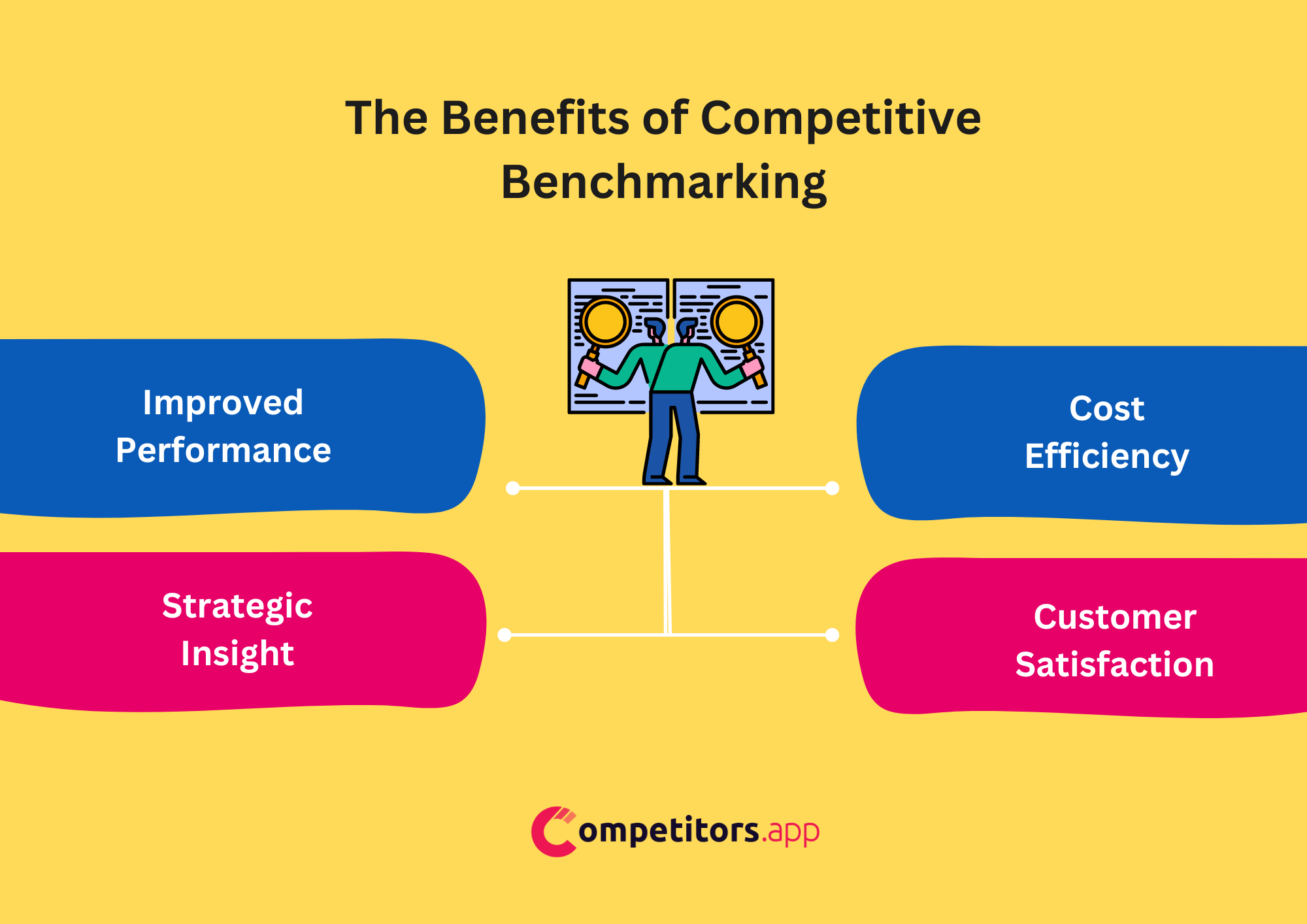
Let’s get real—competitive benchmarking isn’t about stealing. It’s about strategic plagiarism with a conscience. Here’s why it’s the cheat code your business needs:
1. Improved Performance: “Copy-Paste, But Fancier”
Your competitor’s pizza shop gets orders out in 8 minutes. Yours? 20 minutes (and one existential crisis per shift). Benchmarking lets you:
Steal their “pre-rolled dough” hack → slash your prep time
Mimic their app-based order system → reduce customer rage-quits
Result: Your efficiency goes from “mom-and-pop chaos” to “military precision… but with pepperoni.**
2. Strategic Insight: The Spyglass You Didn’t Know You Needed
Example: A coffee shop owner discovered their rival’s “secret” morning rush strategy:
5:30 AM: Post TikTok of barista dancing to Espresso by Sabrina Carpenter
6:00 AM: Offer free mini croissants to first 10 customers
7:00 AM: Dominate “best latte art” Google searches
Your takeaway: Now you’re posting “barista vs. blender” fail videos and tripling foot traffic.
3. Cost Efficiency: How to Be a Bargain-Hunting Ninja
That bakery down the street pays 30% less for flour. How?
- They buy in bulk with three other bakeries (frenemies united!)
- They use a flour broker who moonlights as a TikTok bread influencer
Your move: Partner with local cafes to split supply costs. Suddenly, your $6 sourdough isn’t priced like a luxury item.
4. Customer Satisfaction: Steal Their Love Language
Your competitor’s 5-star reviews all say “felt like family!” Yours say “meh.” So you:
Swipe their “free cookie with every complaint” policy
Copy their post-purchase text blasts (“How’d we do? 😬”)
Outcome: Your reviews now read, “They remembered my dog’s name!” instead of “Didn’t spit in my coffee. 10/10.”
Types of Competitive Benchmarking
- Process Benchmarking: This involves comparing specific business processes and operational techniques against those of industry leaders or direct competitors to identify best practices.
Focus: Examines the efficiency and effectiveness of business processes.
Key Comparisons: Workflow, procedures, and operational techniques.
Objective: Identify and adopt industry best practices to enhance operational efficiency.
Industries: Applicable across various industries, especially where operational processes can be clearly defined and measured.
Data Sources: Process documentation, operational data, industry reports.
- Performance Benchmarking: Comparing your company’s performance metrics, such as speed, quality, and cost, against those of competitors to gauge where you stand.
Focus: Measures specific performance metrics against those of competitors.
Key Comparisons: Speed, quality, cost, and other quantifiable performance indicators.
Objective: Gauge competitiveness and identify areas for performance enhancement.
Industries: Widely applicable, from manufacturing to services, where performance can be quantified.
Data Sources: Financial reports, customer feedback, industry benchmarks.
- Strategic Benchmarking: This type examines the strategies employed by successful companies in the market, offering insights that can inform your strategic planning.
Focus: Analyzes the long-term strategies of successful companies.
Key Comparisons: Business models, market positioning, growth strategies.
Objective: Gain insights for strategic planning and competitive positioning.
Industries: Best suited for industries undergoing rapid change or those with clear leaders.
Data Sources: Strategic plans, industry analysis reports, market research.
- Product Benchmarking: In this approach, the features, quality, and performance of your products are compared with those of the leading competitors to identify areas for improvement or innovation.
Focus: Compares the characteristics of a company’s products with those of industry leaders.
Key Comparisons: Features, quality, user satisfaction, and performance.
Objective: Identify areas for product improvement or innovation.
Industries: Particularly relevant in consumer goods, technology, and automotive sectors.
Data Sources: Product reviews, customer feedback, competitive analysis.
Comparative benchmarking
Comparative benchmarking is like putting your rival’s business under a microscope—then stealing their best cells. Imagine it’s Mean Girls, but instead of Regina George’s hair secrets, you’re cloning the taco truck down the street’s “free guac” hack. Here’s the breakdown:
What is Comparative Benchmarking?
It’s obsessive-compulsive competitor stalking (but legal). For example:
A bakery counts exactly how many sprinkles their rival uses per cupcake (spoiler: 42) → then adds 50.
A plumber times how fast competitors answer emergency calls (winner: 3 minutes vs. your 15) → hires a night-shift crew.
A SaaS startup reverse-engineers a rival’s pricing page like it’s the Zodiac Killer’s cipher → undercuts them by $10/month.
Translation: It’s surgical strikes on specific metrics—not vague “let’s be better” fluff.
Why It’s Your Secret Weapon
Direct Comparison: The “Copy Their Homework” Tactic
Example: Your coffee shop’s loyalty program gives 1 stamp per latte. Your rival’s gives 2 stamps + a meme-worthy GIF. You counter: 3 stamps + a free dad joke with every order.Actionable Insights: No Fluff, Just Stuff That Pays
Case study: A gym found rivals’ Instagram Reels with “gym fails” got 10x more shares than polished ads. They started posting blooper clips → membership sign-ups doubled.Objective Analysis: Data Doesn’t Lie (But Competitors Do)
Tools like SEMrush or SpyFu don’t care if your competitor claims “#1 in customer service.” The data shows their average response time is 48 hours. Your move: Slap “24-hour chat support” on your homepage.
Competitive Benchmarking Metrics

1. Market share
Measures the percentage of an industry's sales that your company captures, indicating your company's competitiveness and appeal to customers. Gather your sales data and determine the total industry sales. Finally calculate your market share = Sales figure data/ industry sales x 100
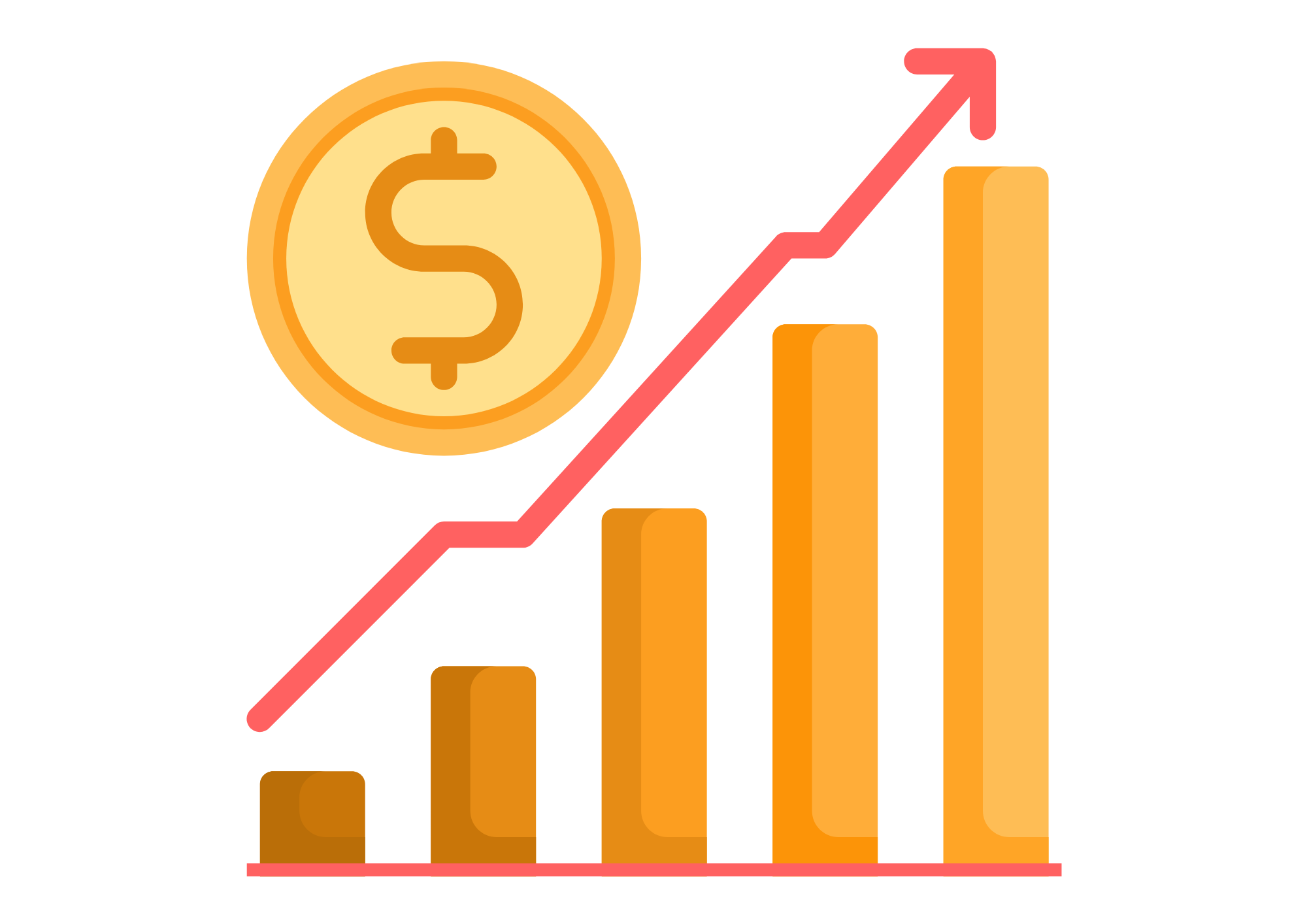
2. Revenue growth rate
Tracks the rate at which your company's revenue is growing over time, compared to competitors, highlighting market position and growth potential. Gather competitors' revenue data Revenue Growth Rate= [(Current Period Revenue−Previous Period Revenue)/Previous Period Revenue]×100%
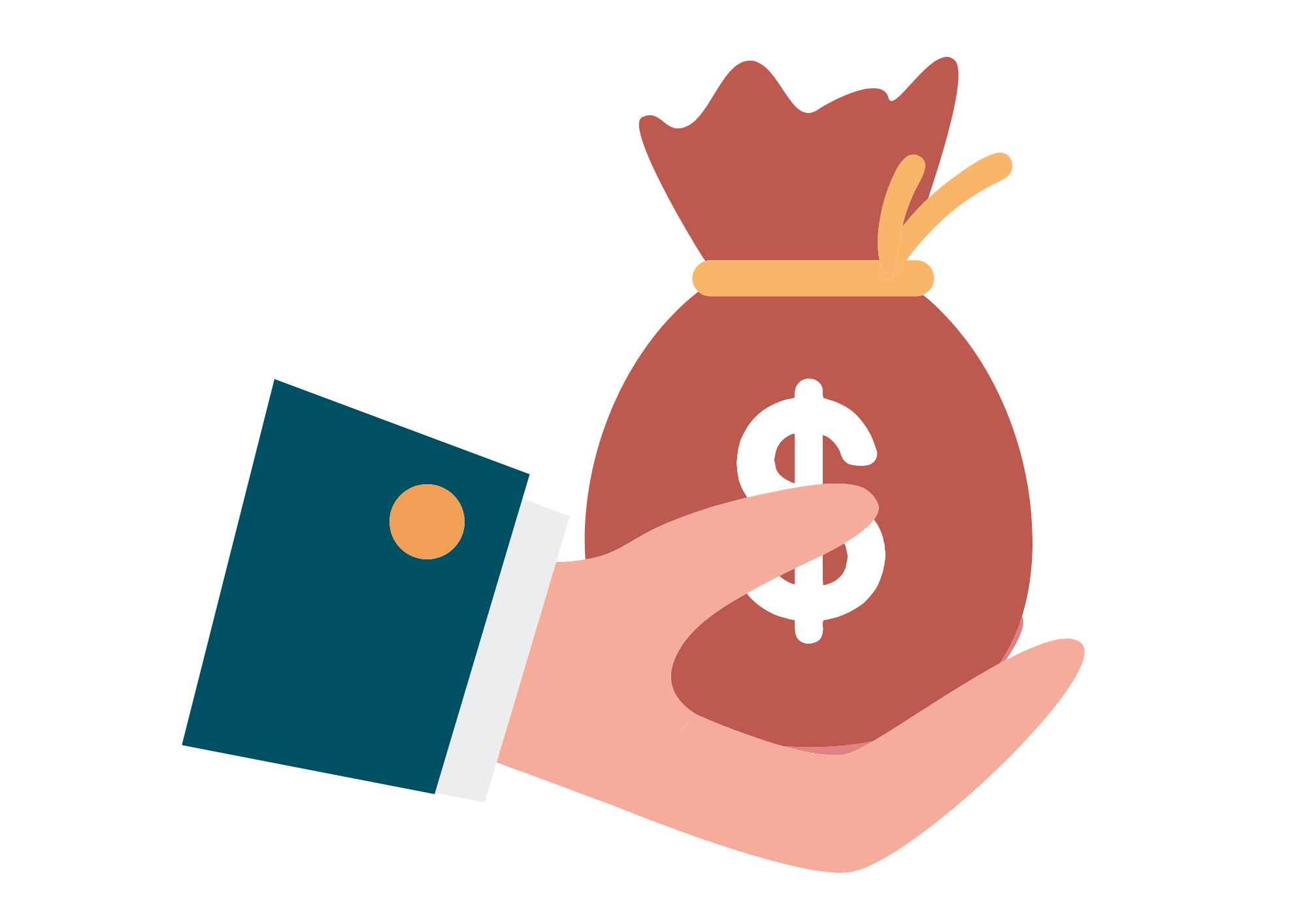
3. Profit Margins
Compares your profit margins (gross, operating, and net) with those of your competitors to assess financial health and operational efficiency. calculate each marging type for your business and then find or estimate the figures for your competitors. gross profit margin operating profit margin net profit margin
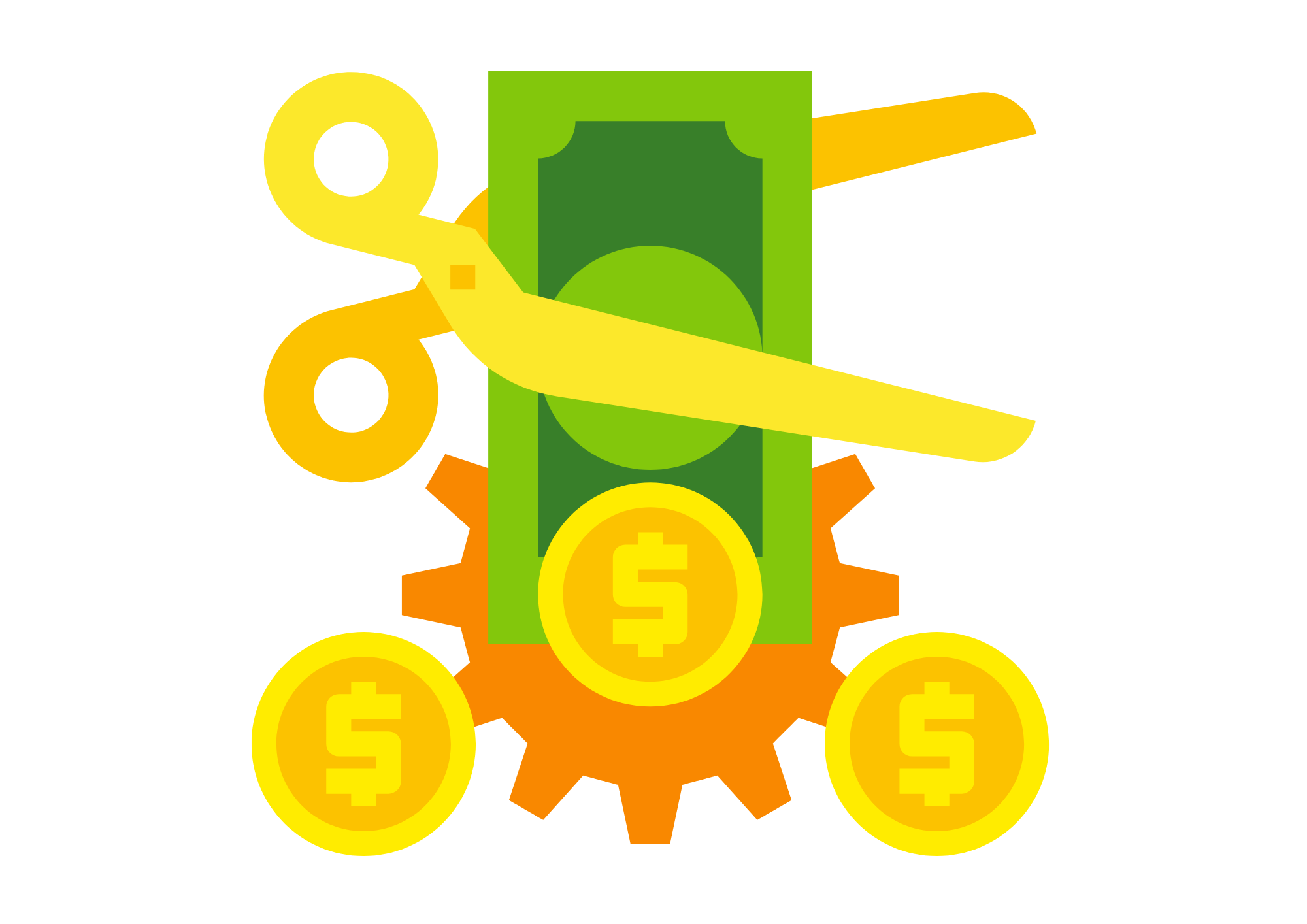
4. Cost Efficiency
Looks at the cost of production, operation, and other key activities in comparison to competitors, identifying opportunities for cost reduction and efficiency improvement.

5. Product Quality
Product Quality: Measures the quality of your products or services against competitors, often through customer feedback, return rates, and quality awards

6. Employee Satisfaction and Turnover
Employee Satisfaction and Turnover: Gauges employee satisfaction levels and turnover rates in comparison to industry norms, reflecting on company culture and operational stability.

7. Digital Presence
To analyze your digital presence and understand your competitiveness in the digital domain, focusing on key online metrics is crucial. These metrics include website traffic, social media presence and engagement, search engine results page (SERP) keyword rankings, and social mentions.
How to do a competitive benchmarking analysis
Competitive benchmarking is a process where a company compares its products, services, processes, and practices against those of its competitors. It’s a strategic management tool that helps organizations identify where they stand in comparison to their competitors and discover areas of improvement. The four steps of competitive benchmarking generally involve identifying what to benchmark, choosing competitors for comparison, collecting data, and analyzing the data to implement changes.
What are the 4 steps of competitive benchmarking?
Identify Competitors
The journey begins with identifying who your real competitors are. Your true competitors are those targeting the same audience segments with offerings that either match or substitute your own. It’s not just about who is present in your industry, but about who occupies the mind and consideration space of your potential customers. You can also use our tool to find competitors.

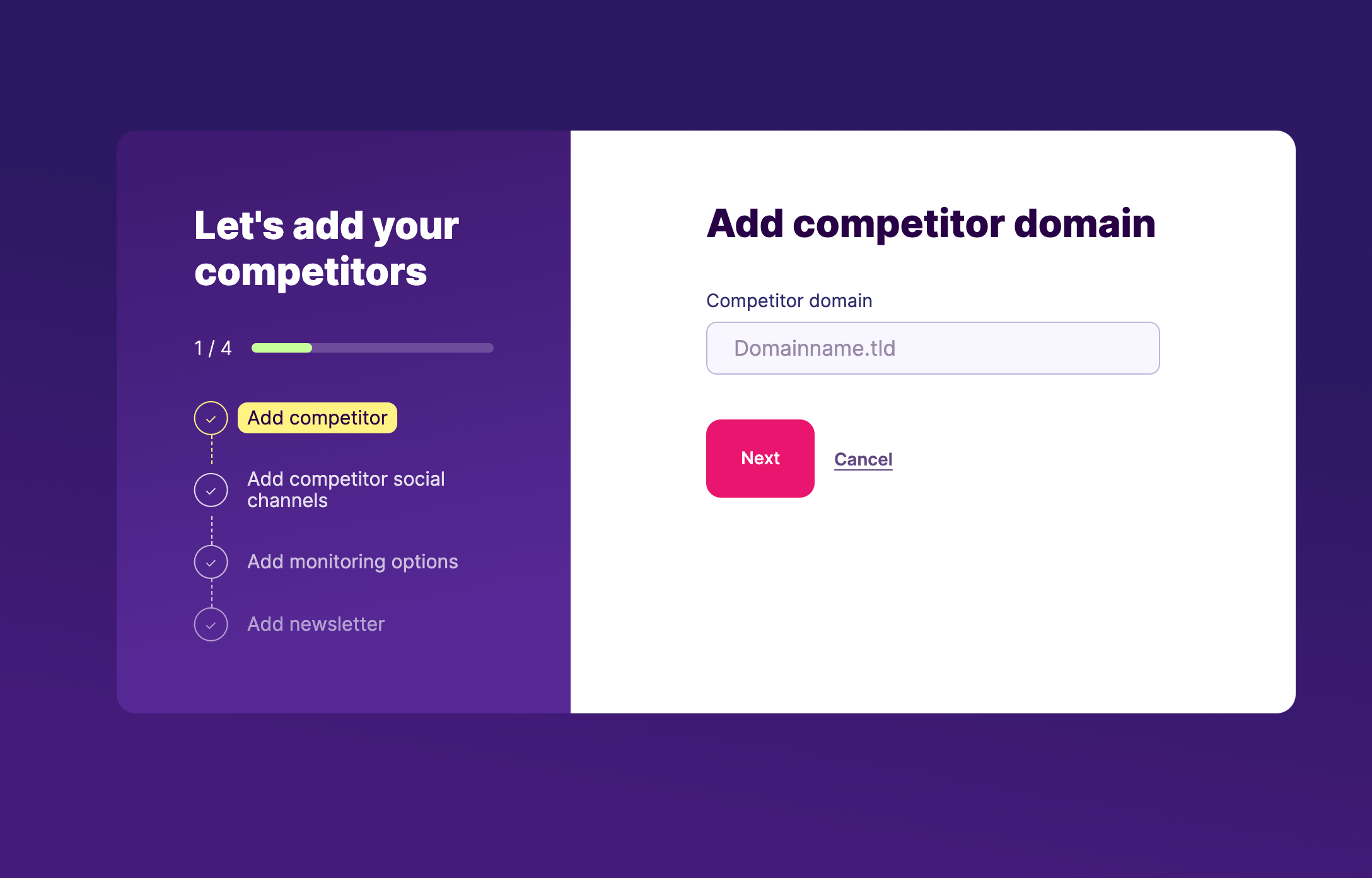
Add Them to Competitors App
Once you’ve pinpointed who your competitors are, the next step is to bring technology into the mix. The Competitors.app serves as your digital lookout, enabling you to keep a close eye on your competition without dedicating hours manually monitoring their activities. It’s about preparing your dashboard to capture all the relevant moves your competitors make, be it on social media, in their advertising campaigns, or any significant changes on their websites.
Navigate to the Dashboard
The next phase is to use the dashboard. Here is were you can benchmark yourself against competitors. From social media engagement and ad campaigns to important news updates and website changes, the dashboard aggregates a wealth of information. This consolidated view saves you from the hassle of juggling between multiple platforms and tools, providing a cohesive overview of your competitive landscape.
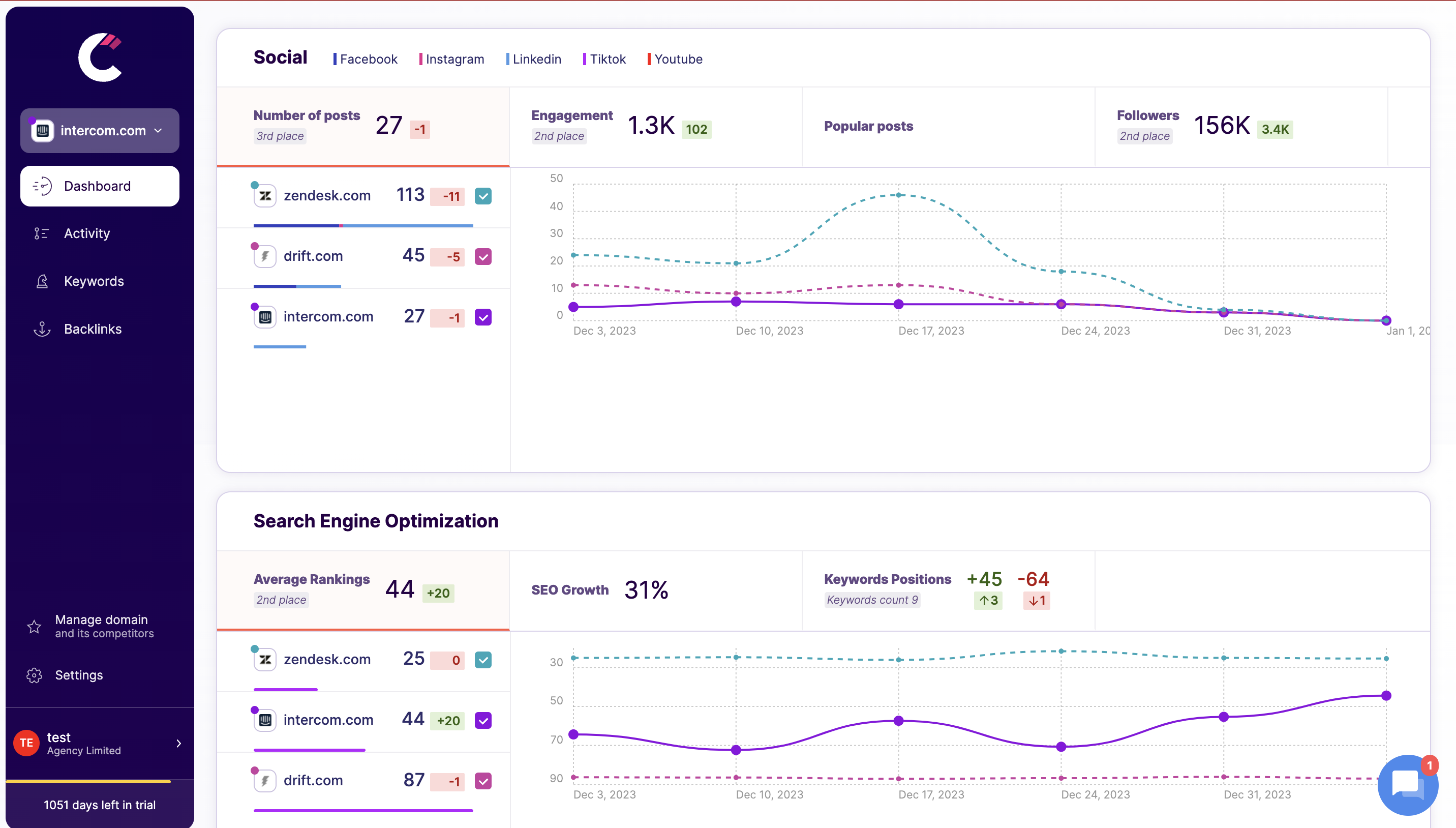
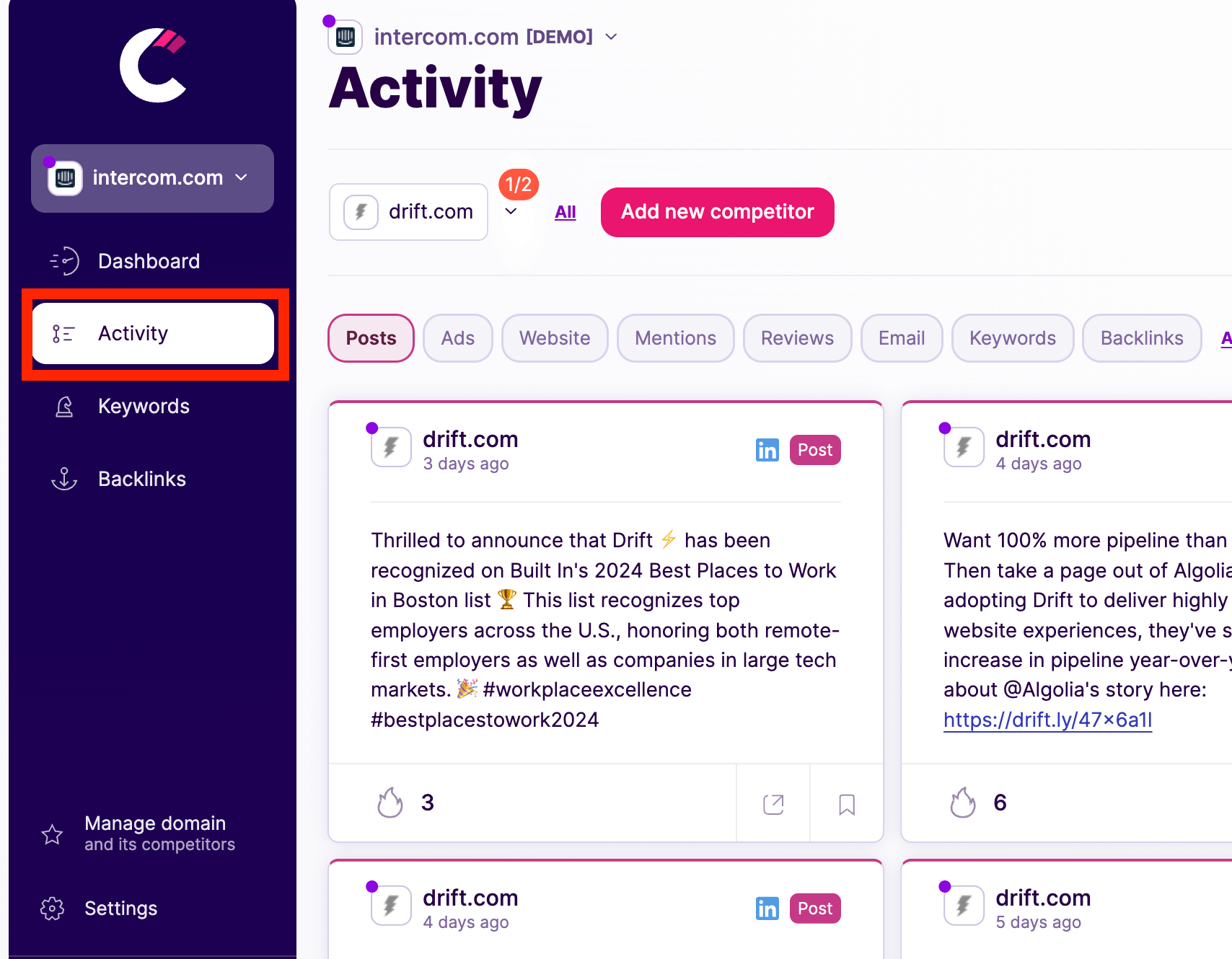
See Specific Competitive insights
The forth step involves delving into the specifics of what your competitors are doing, particularly in areas like social media and ads, their most important news, and through comprehensive competitor analysis and website monitoring. This stage is crucial for understanding not just the actions of competitors, but the effectiveness of those actions. Businesses can observe which strategies are gaining traction, the types of campaigns that are launched, how often competitors update their websites, and the nature of content that engages their audience.
Analyze Data and Draw Insights
The final step in the competitive benchmarking journey is where the magic happens: analysing the collected data to draw actionable insights. This is where you move beyond observation to strategic action. By examining your competitors’ successes and missteps, you can uncover opportunities to adjust your strategies, optimize your marketing efforts, and ultimately, carve out a stronger position in the market. You can also do a more comprehensive analysis by using our competitor analysis template or sales battlecards template.
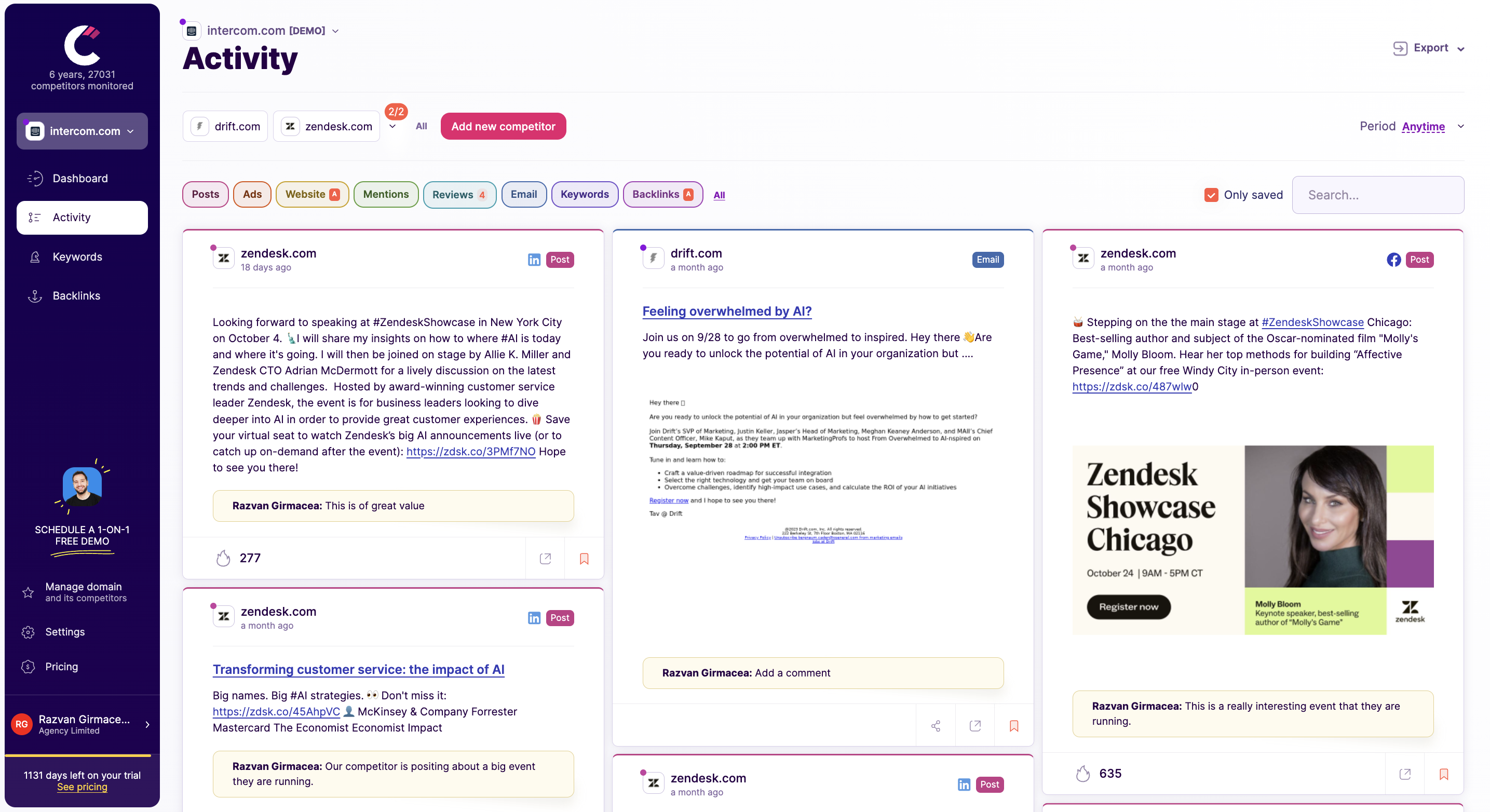
Examples of competitive benchmarking
Let’s get real—competitive benchmarking isn’t just theory. Here’s how we reverse-engineered the marketing playbooks of CRM giants like ActiveCampaign, HubSpot, and Mailchimp using Competitors.app:
The Goal
Uncover why these platforms dominate the email automation space—and steal their best moves.
How We Did It
Ad Spend Spy Mode:
Used Competitors.app to track where they dropped cash (Google Ads, LinkedIn, TikTok).
Example: HubSpot spent 60% of its budget on LinkedIn ads targeting B2B managers. So we pivoted our B2B ads to LinkedIn too.
Social Media Autopsy:
Analyzed their top posts: HubSpot leaned on case studies, Mailchimp on memes.
Finding: ActiveCampaign’s “How-to” video guides drove 3x more shares than promotional posts.
Review Mining:
Scraped 1,000+ customer reviews. Key takeaway: Users loved Mailchimp’s ease-of-use but hated its pricing jumps.
What We Learned
ActiveCampaign: Targets small biz owners with hyper-personalized email workflows.
HubSpot: Dominates B2B with free CRM tools (loss leaders) to upsell premium features.
Mailchimp: Banks on brand recognition but struggles with post-sale support.
Stats that shocked us:
Brands using LinkedIn for B2B ads saw a 33% higher lead quality (Source: HubSpot, 2023).
72% of users switch CRMs due to pricing surprises (Source: G2).
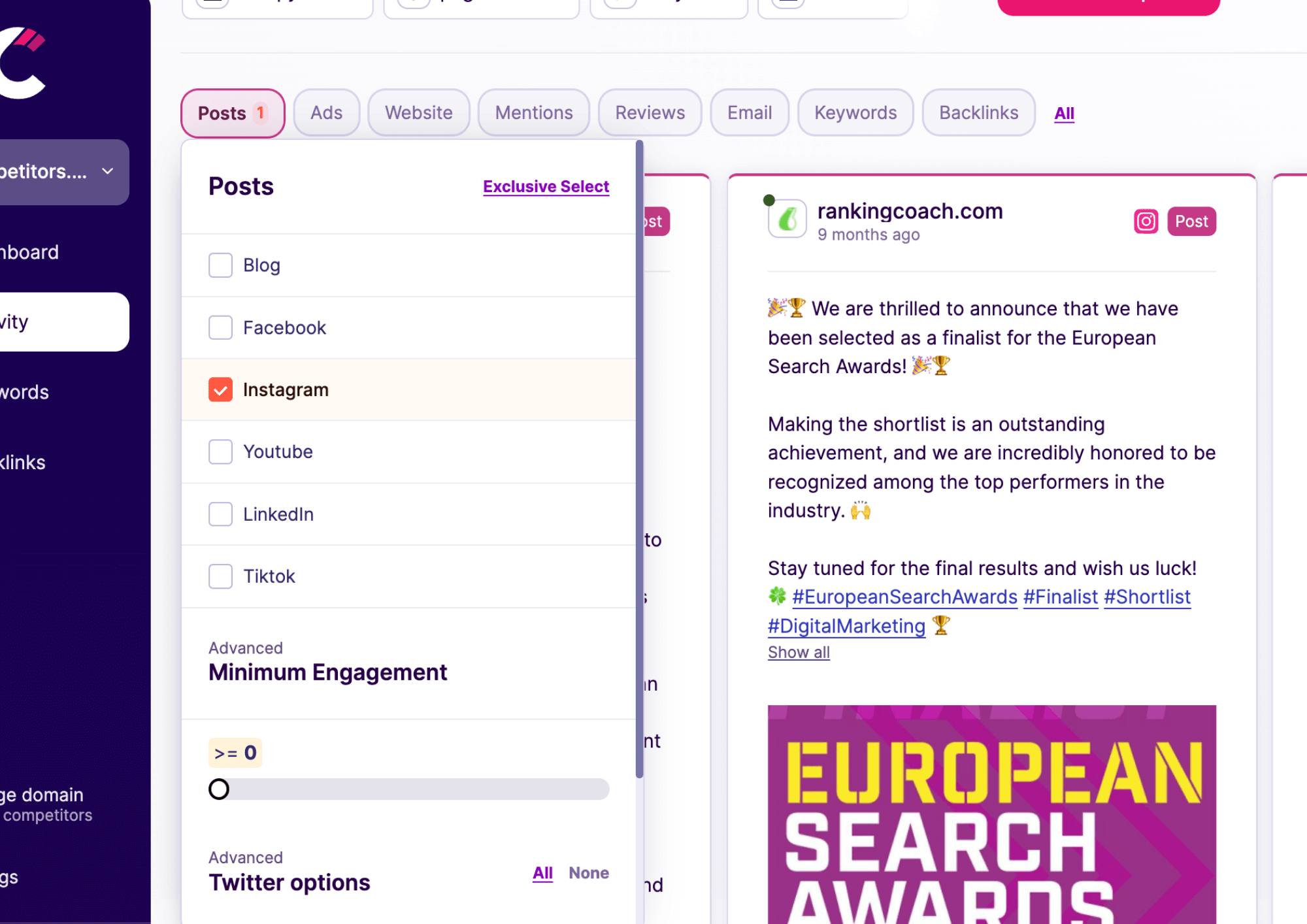
Social Media Competitor Benchmarking
Use Competitors App to benchmark your social media performance to competition. See followers, engagement, and overall growth.

Website & Traffic Benchmarking
Use Competitors App to monitor website traffic and identify which competitor gets the most traffic and why.
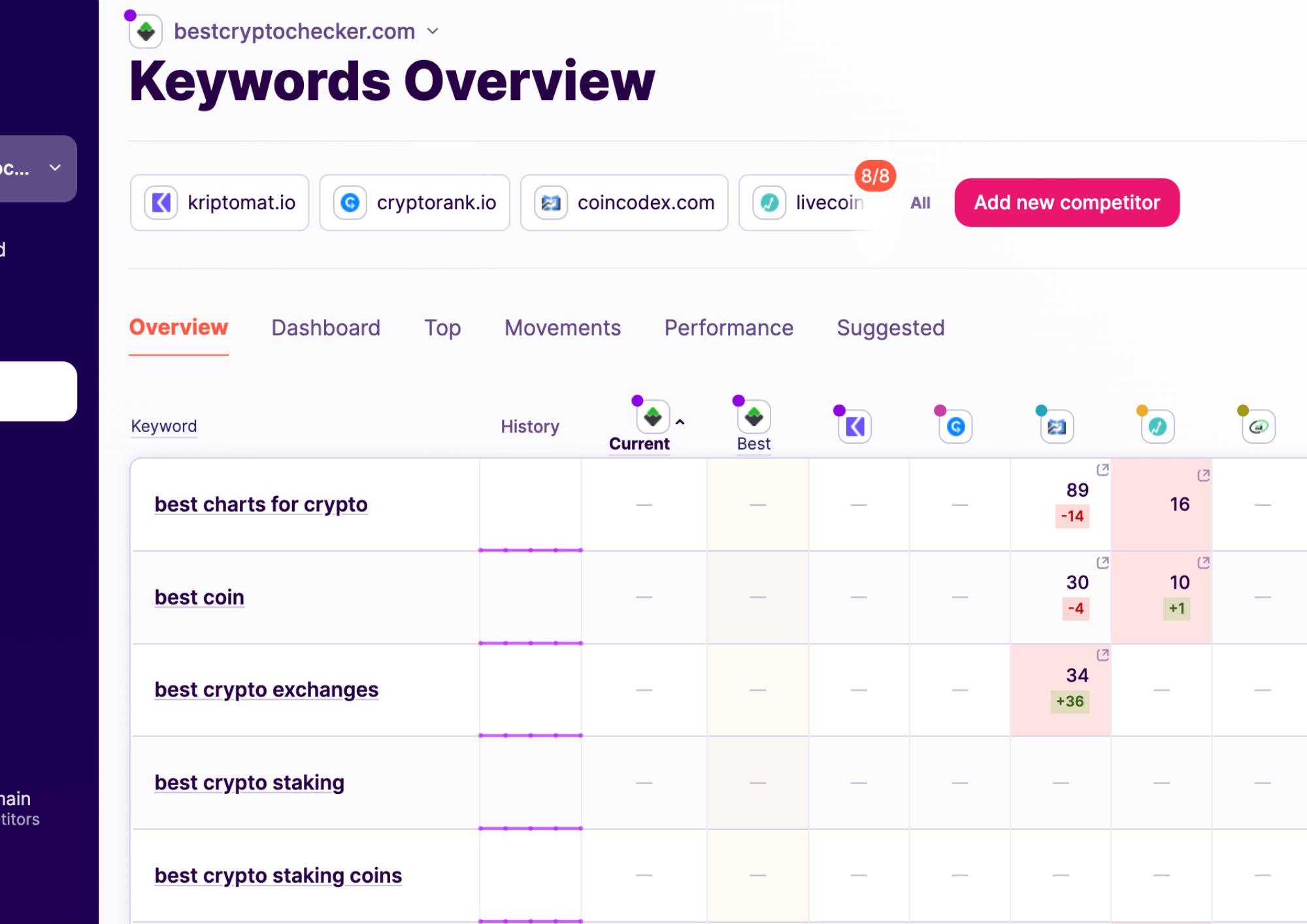
SERP Results Benchmarking
Compare how you and your competitors rank against top keywords in the market and what to do to improve.
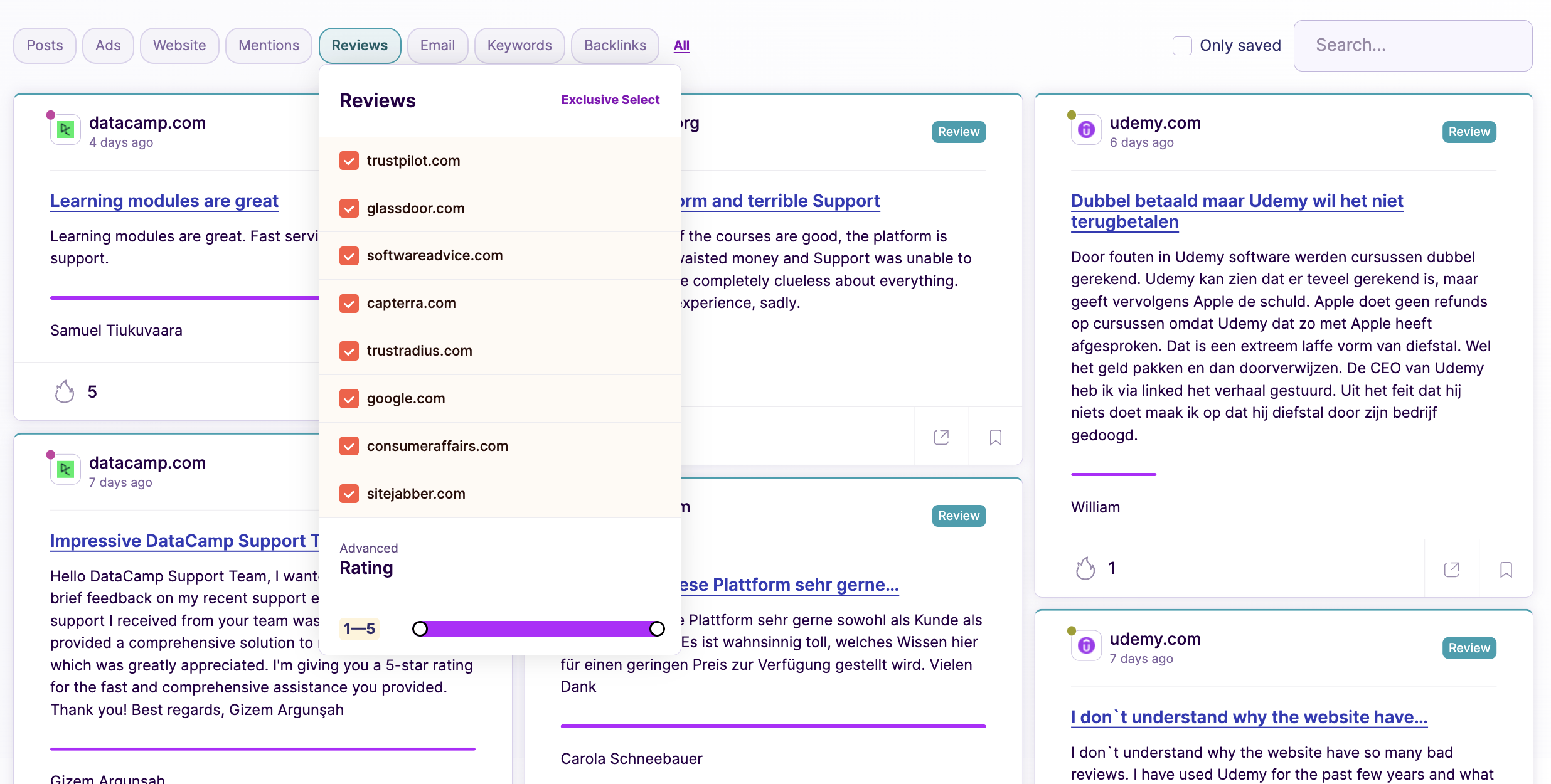
Competitor Reviews Benchmarking
Analyse the number of positive vs negative reviews and take action if you see the negative reviews of a competitor growing drastically.
The best competitor benchmarking tools

Competitors app
This tool specifically zeroes in on monitoring your competitors providing updates on their rankings, marketing strategies, and more.

Crayon
This tool offers detailed insights into your competitors' activities. Its strength lies in its ability to monitor a wide range of sources, including websites, social media platforms, review sites, and more
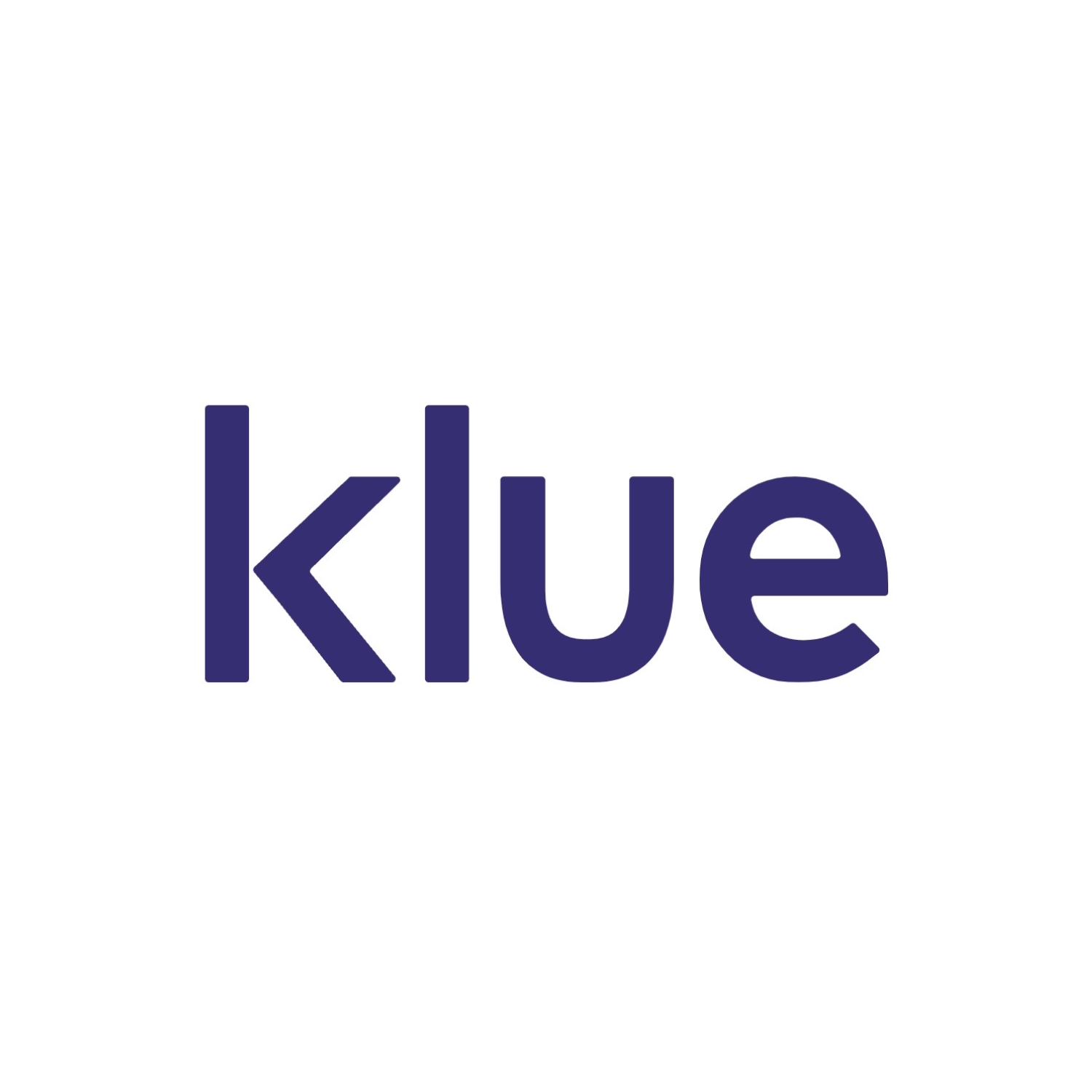
Klue
Klue stands out for its ability to aggregate data from a wide variety of sources, including public data, proprietary data, and team inputs, making it a comprehensive platform for competitive intelligence.
Download our free competitive benchmarking template
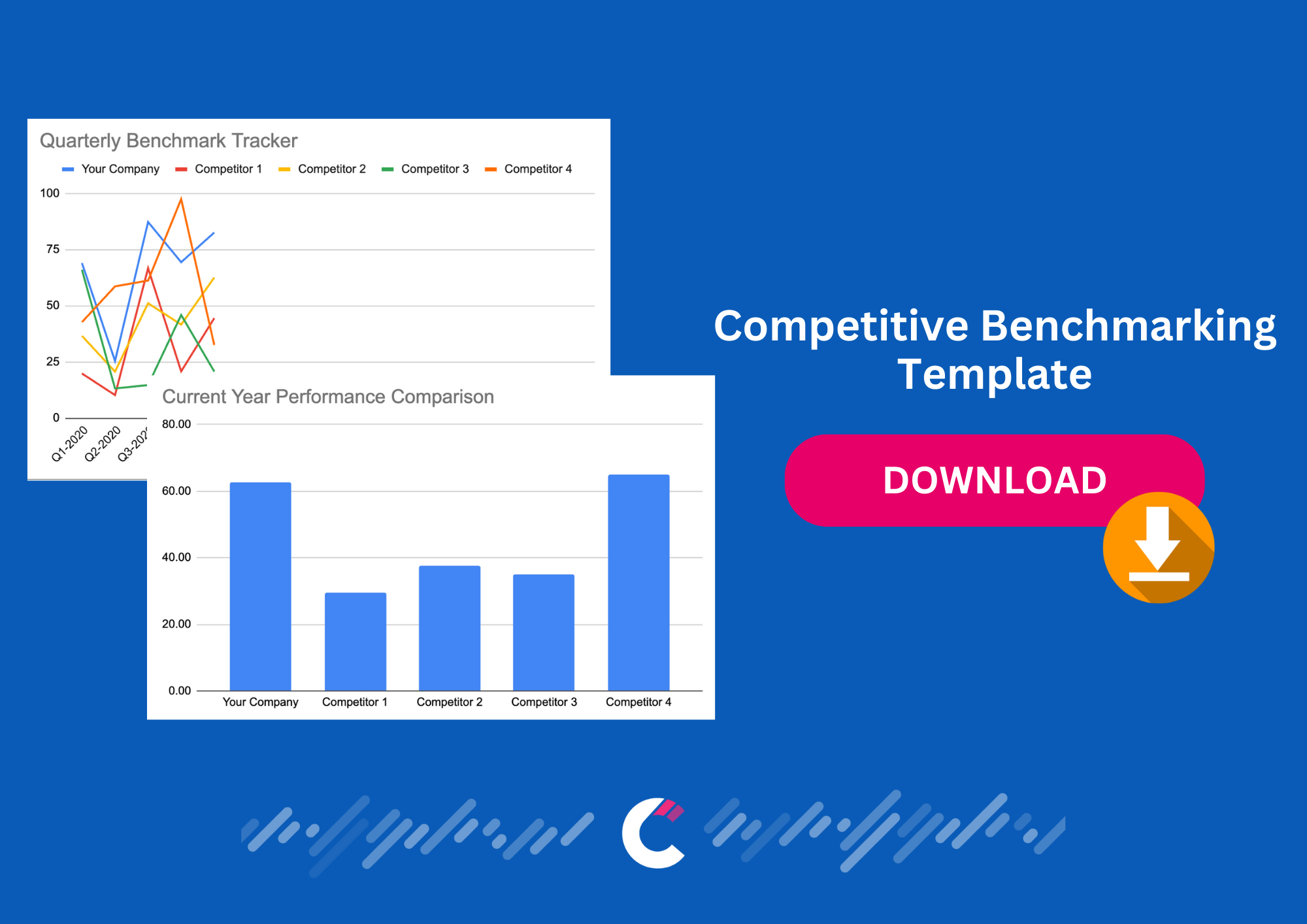
Using a Competitive Benchmarking Framework
Here’s how to build a benchmarking strategy that actually works—no fluff, just stolen tactics from competitors who are winning:
1. Identifying Key Competitors
Translation: “Who’s eating your lunch?”
Example:
- A Shopify store selling yoga mats realized their real competitor wasn’t Amazon—it was a TikTok viral brand giving away free meditation guides with every purchase.
Tool: Use SEMrush or SimilarWeb to find who’s stealing your “best organic skincare” traffic.
2. Selecting KPIs
Translation: “What metrics hurt to look at?”
Stealworthy KPIs:
- Customer Acquisition Cost (CAC): “Why does their TikTok ad cost $0.50 per click, and ours is $5?”
- Churn Rate: “Their subscribers stay 6 months; ours bail after 2.”
Example: A SaaS company tracked “feature adoption rate” after realizing rivals retained users with a “how-to” onboarding series.
3. Data Collection
Translation: “Play detective without the trench coat.”
Sources That Don’t Lie:
- Reviews: Scrape G2/Capterra for phrases like “switched because…”
- Social Scraping: Tools like Brandwatch to see why competitors’ “day-in-the-life” reels get 10K shares.
Example: A coffee shop found rivals’ “loyalty program” complaints on Reddit—then launched a “no points expiration” perk.
4. Analysis
Translation: “Why do they suck less?”
Cold Hard Truths:
- Competitor A’s checkout flow has 3 clicks; yours has 8.
- Competitor B’s email open rate is 45% (subject line: “Your cart is crying”). Yours: 12% (subject line: “Monthly Newsletter”).
Tool: Hotjar to heatmap their UX wins vs. your dead zones.
5. Action Planning
Translation: “Copy, but make it sparkle.”
- Steal This Play:
- Competitor uses “free consult” to hook clients? Add “free consult + espresso shot.”
- Their LinkedIn posts go viral? Hire their ex-intern to ghostwrite yours.
The Framework Cheat Sheet
| Step | What to Do | Real-World Example |
|---|---|---|
| Identify | Stalk competitors stealing your SEO | Found 3 “local SEO” rivals via Ahrefs gaps |
| KPIs | Track CAC, churn, conversion rate | Cut CAC by 40% after mimicking TikTok ads |
| Data | Scrape reviews, spy on social | Reddit rant revealed rivals’ weak shipping |
| Analyze | Compare UX, pricing, retention | Swiped a 1-click checkout flow → sales +25% |
| Act | Launch better/weirder offers | “Free tarot reading with purchase” → 200% CTR |
Pro Tip: Use Google Alerts + Competitors.app to automate tracking. Update benchmarks quarterly—because competitors copy you too.
Creating a Strategic Benchmarking Approach
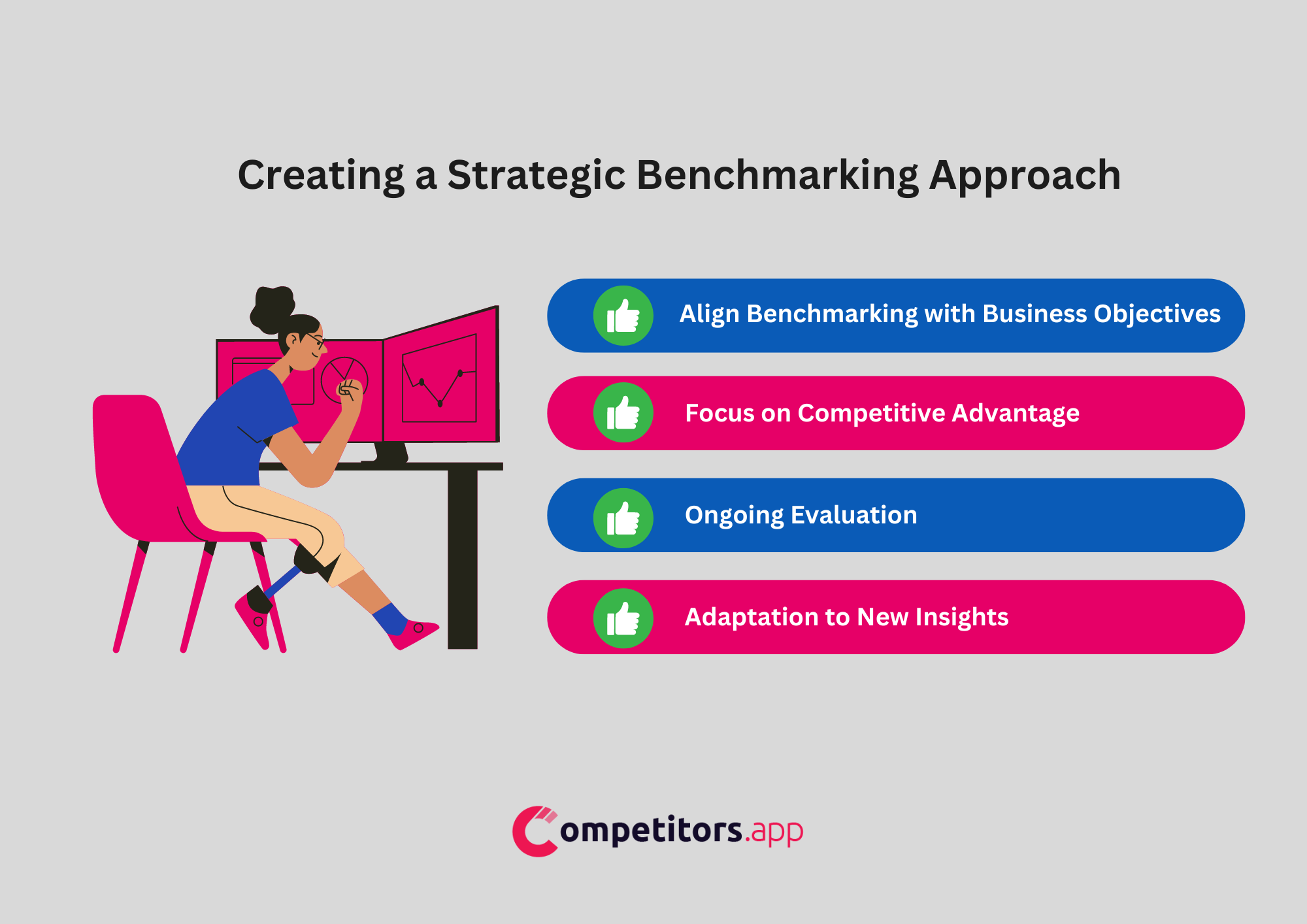
1. Align Benchmarking with Business Objectives
Translation: “Stop benchmarking random crap.”
- Example: A local bakery benchmarking “Instagram likes” wasted 3 months… until they focused on “cost per croissant” vs. rivals to hit their profit margin goal.
- How to Nail It:
- Goal = “Increase SaaS trial conversions”? Only benchmark competitors’ free trial UX and onboarding emails.
- Goal = “Reduce customer churn”? Steal rivals’ “win-back” discount tactics.
2. Focus on Competitive Advantage
Translation: “Double down on what makes you weird.”
- Case Study: A gym owner discovered rivals ignored “postpartum fitness.” She launched MomBod Reset Classes and now owns 80% of local Google searches for it.
- Tool: Use SEMrush’s Keyword Gap Analysis to find niches competitors overlook (e.g., “vegan plumber near me”).
3. Ongoing Evaluation
Translation: “Set calendar reminders or regret it.”
- Reality Check: That competitor you crushed last quarter? They just slashed prices by 30% and added a meme-based loyalty program.
- Hack: Schedule monthly “spy days” using:
- Google Alerts for competitor news
- Ahrefs to track their keyword moves
- Siftery to monitor their feature launches
4. Adaptation
Translation: “When life gives you lemons, steal better lemons.”
- Example: A coffee shop’s rival launched “buy 5, get 1 free” cards. They countered with “Buy 3, get 1 free + a bad dad joke”—sales spiked 120%.
- Adaptation Framework:
Competitor Move Your Counter Launches TikTok recipes Post “failed recipe” blooper reels Slashes prices by 20% Add “price lock guarantee” Boasts “24/7 support” Offer “12-minute response or $10”
Competitive Benchmarking Best Practices
1. Clearly Define Objectives
Translation: “What’s the damn point?”
- Example:
A coffee shop owner benchmarked only “cost per latte” against rivals to slash ingredient spending by 27%. Ignored vanity metrics like “Instagram likes.” - Tool: Use Notion or Trello to pin goals like “Reduce customer service response time to <10 mins” → benchmark only that.
2. Select Relevant Benchmarks
Translation: “Track what hurts, ignore the noise.”
- Stealworthy Metrics:
- E-commerce: Cart abandonment rate (why yours is 75% vs. their 50%).
- SaaS: Free-to-paid conversion rate (their 8% vs. your 2%).
- Case Study:
A skincare brand tracked “% of reviews mentioning ‘breakouts’” → reformulated products → 1-star reviews dropped by 40%.
3. Use Reliable Data Sources
Translation: “Don’t trust Randos on Reddit.”
- Sources That Don’t Lie:
- Competitor Pricing: Use Prisync or Competitors.app → real-time tracking.
- Customer Sentiment: Brandwatch or ReviewTrackers → filter reviews for “switched from [competitor]”.
- Avoid: Vanity metrics like “social followers” (bots exist) or unverified third-party reports.
4. Analyze and Act on Findings
Translation: “Stop overthinking, start doing.”
- Real-World Pivot:
A SaaS company found rivals’ users loved “one-click integrations.” They launched a “Plug & Play” feature → trials spiked 90%. - Tool: Hotjar heatmaps to see why their checkout flow converts 2x faster than yours.
Pitfalls to Avoid while Benchmarking Against Competitors
1. Don’t Benchmark Like a Horse with Blinders
Translation: “Single-metric obsession = slow death.”
Example: A bakery hyper-focused on “Instagram likes” missed rivals’ 30% cheaper flour suppliers crushing their margins.
Fix: Balance specific metrics (e.g., email open rates) with big-picture checks (e.g., overall customer lifetime value).
2. Your Past Self is a Competitor Too
Translation: “Internal data is free intel.”
Case Study: A startup tracked their own monthly churn rate trends—discovered a buggy update caused a 50% spike. Fixing it beat any competitor analysis.
Tool: Use Google Analytics annotations or Mixpanel to flag internal wins/fails.
3. Copycats Get Eaten by Panthers
Translation: “Innovate or stagnate.”
Fail Story: A meal kit company copied HelloFresh’s recipes verbatim. Customers called it “sad tribute band energy.”
Win Move: Instead of cloning Mailchimp’s UI, a CRM startup let users AI-generate email copy → viral organic growth.
Tip: Use benchmarking to spot gaps, then brainstorm weird solutions (e.g., “What if we added a meme editor to our invoicing tool?”).
Common Challenges and How to Overcome Them
🌐 Challenge: “Data’s Locked in a Vault”
Struggle: Can’t find competitor pricing, ad budgets, or customer retention stats.
Fix:
-
Tool Stack: SEMrush (steal their SEO keywords), BuiltWith (track their tech stack), Owler (get funding alerts).
-
Real-World Hack: A DTC brand reverse-engineered a rival’s email flow by signing up for their newsletter with a fake domain.
📉 Challenge: “Is This Data Even Real?”
Struggle: Found 3 conflicting reports on a competitor’s market share.
Fix:
-
Triangulate: Cross-check SimilarWeb traffic stats + LinkedIn headcount growth + Glassdoor sales team reviews.
-
Pro Tip: If a SaaS rival claims “10K customers,” check their app’s public API endpoints (yes, people do that).
🌀 Challenge: “The Market Changed Yesterday”
Struggle: Your 6-month-old benchmarks are as relevant as MySpace.
Fix:
-
Automate: Set Google Alerts for competitors + use Competitors.app for real-time pricing updates.
-
Example: A crypto tracker used Twitter bots to alert them when rivals added new coins.
💥 Challenge: “Drowning in Data”
Struggle: Your team spends 20 hours/week updating spreadsheets.
Fix:
-
Automate or Die: Use Airtable (organize data) + Zapier (auto-pull social metrics) + Tableau (visualize trends).
-
Real-World Fix: A marketing agency automated competitor ad tracking with Swydo → saved 15 hours/week.
🎯 Challenge: “KPIs Don’t Match Goals”
Struggle: Tracking “social followers” when your goal is reducing churn.
Fix:
| Goal | KPI to Steal | Tool to Use |
|---|---|---|
| Cut CAC | Competitor’s TikTok ad CPC | AdEspresso |
| Boost Retention | Rival’s email re-engagement rate | Mailchimp Analytics |
| Improve NPS | % of reviews mentioning “support” | ReviewTrackers |
🤖 Challenge: “Analysis Paralysis”
Struggle: Your team debates data for weeks but acts on nothing.
Fix:
-
Speed Wins: Run weekly “sprint benchmarks” (e.g., “Test 3 competitor CTAs on our landing page by Friday”).
-
Example: A fintech startup A/B tested a rival’s “Get Started” button color → boosted sign-ups 18% in 3 days.
Success Stories


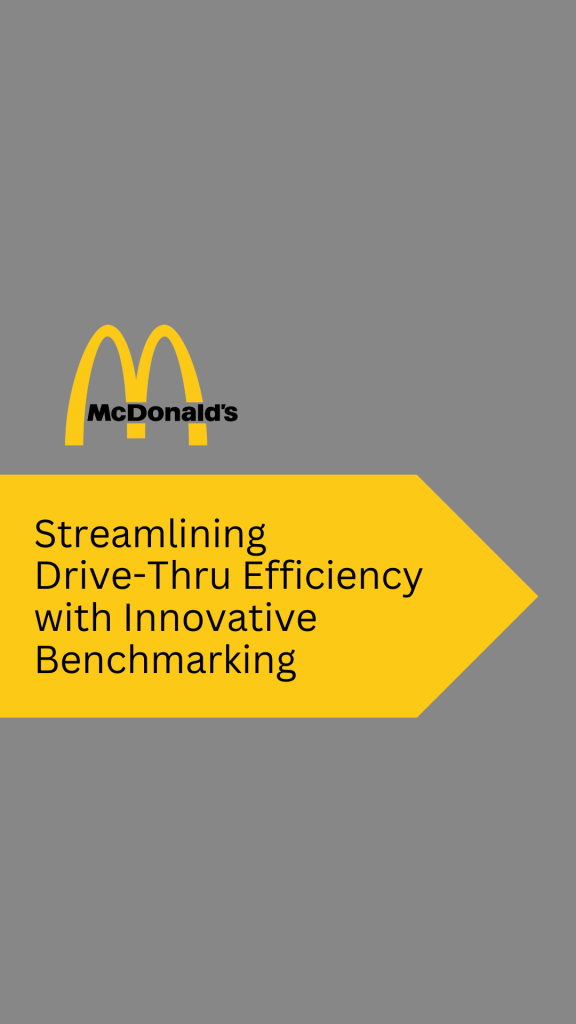
Toyota: Revolutionizing Production with Benchmarking
The automotive behemoth from Japan, Toyota, is lauded for its dedication to Total Quality Management (TQM) and the ethos of perpetual enhancement. In a landmark move during the 1980s, Toyota embarked on a benchmarking journey, scrutinizing the manufacturing methodologies of giants like Ford and General Motors. The insights gleaned from these industry leaders were instrumental in Toyota’s creation of its celebrated Toyota Production System (TPS). This system, which set new standards across the automotive sector, underscored the principles of minimizing waste, empowering workers, and implementing just-in-time production tactics.
Amazon: Enhancing Logistics Through Strategic Benchmarking
Amazon, the titan of e-commerce, has unwaveringly prioritized delivering superior customer service. By benchmarking against the best, notably Walmart’s supply chain prowess, Amazon gleaned crucial insights to bolster its logistics and inventory control mechanisms. Embracing the efficient supply chain models of Walmart allowed Amazon to significantly boost its delivery efficiency and heighten customer satisfaction, reinforcing its position as a leader in the global e-commerce space.
McDonald’s: Streamlining Drive-Thru Efficiency with Innovative Benchmarking
McDonald’s, the iconic fast-food conglomerate, has adeptly harnessed the power of benchmarking to refine its operational efficacy, particularly in its drive-thru service. Drawing inspiration from the high-octane efficiency of Formula One pit crews in the late 1990s, McDonald’s analyzed their coordination, teamwork, and precision. Implementing these lessons transformed McDonald’s drive-thru service, achieving swifter service delivery and elevating customer satisfaction across its global outlets.
1. Is Competitive Benchmarking Only for Large Corporations?
No, businesses of all sizes can benefit from benchmarking to improve their competitive position.
2. How Often Should a Business Conduct Competitive Benchmarking?
It depends on the industry and market dynamics, but regularly reviewing and updating your benchmarks is advisable.
3. Can Competitive Benchmarking Uncover Unique Opportunities?
Yes, by identifying gaps in the market or areas where competitors are underperforming, you can uncover opportunities for differentiation and innovation.
4. What Data Sources are Essential for Effective Benchmarking?
Financial reports, customer feedback, market research, and industry benchmarks are critical data sources.
5. Are There Risks Associated with Competitive Benchmarking?
Potential risks include becoming too reactive to competitors' actions or misinterpreting data, which can be mitigated through careful analysis and strategic focus.
6. How Can Small Businesses Leverage Competitive Benchmarking on a Budget?
Small businesses can focus on freely available data and prioritize key areas for benchmarking to manage costs effectively.
7. What is the difference between external benchmarking and competitive benchmarking?
External benchmarking looks at industry-wide standards, while competitive benchmarking specifically compares your business to its competitors.
8. What is competitive benchmarking in UX?
It involves comparing the user experience of your products or services against those of your competitors to identify areas for improvement.


